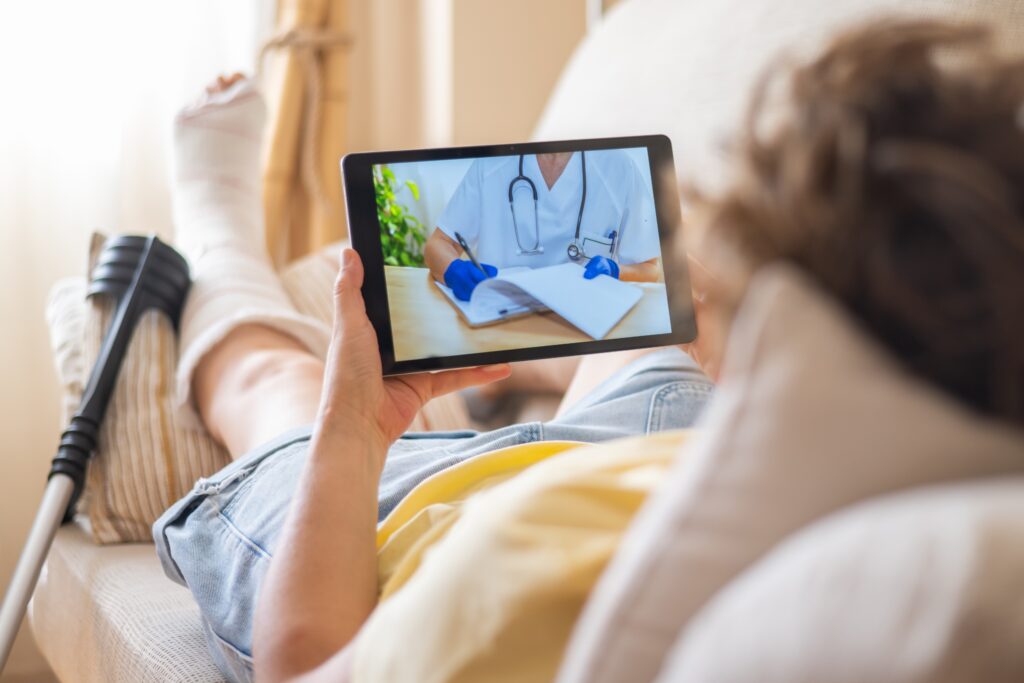Patient follow-up after an urgent care visit is crucial for making sure recovery goes smoothly and avoiding future problems. New tools and best practices help healthcare providers track patients’ progress, manage symptoms, and adjust treatment plans when needed. This makes an urgent care visit more effective and safer for patients.
Digital systems and better communication strategies let doctors and team members stay in touch and offer more personalized care. These improvements help urgent care centers deliver steadier, higher-quality services while supporting continuous improvement.
Understanding these new methods can help patients know what to expect after a visit and why follow-up matters. It also shows how urgent care is evolving to meet needs more clearly and effectively.
Patient Follow-Up After Your Urgent Care Visit: New Tools and Best Practices
Understanding the Importance of Patient Follow-Up
Patient follow-up after an urgent care visit plays a key role in ensuring the right treatment takes place, preventing complications, and improving how patients feel about their care.
It helps doctors check progress, catch problems early, and connect patients back to their primary care doctor when needed.
Ensuring Proper Treatment Outcomes
Follow-up care lets healthcare providers track how well a treatment is working. It allows them to check if medications are effective and identify any side effects.
This ongoing monitoring is important, especially for patients with high blood pressure or other conditions that may need further testing or adjustments. For example, if symptoms do not improve or new ones show up, doctors can change the treatment plan.
Without proper follow-up, health issues can be missed, delaying recovery or causing conditions to worsen. Regular follow-ups provide updated health information, supporting more accurate decisions and better treatment outcomes.
Reducing Return Visits
Timely patient follow-up after urgent care helps reduce the need for patients to return to emergency rooms. By addressing issues early, follow-up visits prevent complications that might otherwise require new treatments or hospital stays.
Clear communication during follow-up helps patients manage their care at home, such as knowing when to seek help or how to use medications correctly. Reminder systems, like calls or texts, help avoid missed appointments and encourage better user adoption of health tools.
Enhancing Patient Satisfaction
Shorter wait times between urgent care and follow-up visits increase how satisfied patients feel with their care. Patients who experience quick, organized follow-up are more confident in their treatment and the healthcare system.
Follow-up also gives patients a chance to ask questions and receive further explanations about their care. Feeling supported during recovery improves trust and reduces anxiety.
Providers who use clear schedules and communication build stronger relationships with patients, encouraging them to stay engaged in their health over the long term.
New Tools for Post-Urgent Care Communication
Modern follow-up after urgent care visits uses technology to keep patients informed and involved. These tools help track recovery, remind patients of next steps, and create easier access to healthcare providers. They improve communication while reducing burdens on staff.
Patient Portals and Secure Messaging
Patients can access health information securely online and get updates from their urgent care staff. Secure messaging helps reduce confusion and supports consistent updates from project management systems designed to streamline patient care.
Healthcare staff can send personalized instructions and updates. This direct line of communication helps avoid confusion and missed follow-ups.
Remote Patient Monitoring Solutions
Devices now track vital signs such as oxygen levels and blood pressure. This supports follow-up for patients with chronic conditions that require close supervision.
This data goes to healthcare providers who can review it regularly. They can spot problems early and adjust care before complications develop.
This approach supports patients recovering from conditions that need close observation but not hospital stays.
Telehealth Follow-Up Visits
Through telehealth, patients with mobility challenges or transportation issues can still meet with providers after an urgent care visit. This strengthens care continuity and helps address areas for improvement quickly.
Doctors can reassess symptoms, review medications, and suggest additional tests or referrals. This virtual meeting maintains continuity of care.
It is especially valuable for patients with mobility issues or those in remote areas without easy access to clinics.
Automated Follow-Up Reminders
Automated reminders notify patients about upcoming appointments, medication schedules, self-care steps, or training sessions. Delivered by text, email, or phone, these reminders keep patients on track with their care plan, reduce missed follow-ups, and improve adherence.
By replacing manual reminder calls, they also free staff time and improve efficiency, allowing healthcare providers to focus on direct patient care and better outcomes.
Best Practices for Effective Follow-Up After Urgent Care
Effective follow-up after an urgent care visit needs clear steps to make sure patients heal properly and safely. It depends on timely communication, clear instructions, and smooth teamwork with the primary care doctor or primary care provider (PCP).
Timely Communication Protocols
Timely communication is key to successful follow-up care and its successful implementation. Patients should be contacted quickly after discharge, ideally within a few days. This allows providers to answer questions, check for new symptoms, and arrange further appointments if needed.
Automated systems or nurse-led follow-up calls can help increase the rate of timely contact. These calls serve to offer education, remind patients about next steps, and connect them to ongoing care.
Fast communication builds trust and reduces the chance of complications or readmissions. By ensuring prompt outreach, providers strengthen the effectiveness of follow-up efforts and support better patient outcomes.
Personalizing Discharge Instructions
Discharge instructions must be clear and specific to the patient’s condition. Providers should explain symptoms to watch for, medication directions, and actions if problems develop. Written instructions help patients remember details.
Personalization includes considering language, health literacy, and access to resources. Using simple language and step-by-step guides improves understanding. Follow-up reminders or checklists can support patients in managing their care at home.
Coordinating With Primary Care Providers
Coordination with primary care providers (PCPs) ensures continuity of care after urgent visits. Urgent care centers should share visit details and test results with PCPs promptly.
Scheduling follow-up appointments before the patient leaves helps improve attendance. Communication between clinicians also supports better decision-making and monitoring. Coordinated care reduces gaps, which lowers risks of missed issues and emergency readmissions.
Adapting to Future Trends in Urgent Care Follow-Up
Urgent care centers must update their follow-up practices to keep patients informed and improve outcomes. This means using smart technology, clear patient communication, and ongoing checks to measure success. Each approach focuses on better coordination and patient satisfaction.
Integrating AI for Follow-Up Management
AI tools can automate reminders, personalize follow-up messages, and flag patients who need urgent attention. This reduces the burden on staff and speeds up responses.
AI can analyze patient data to predict who may face complications. This allows urgent care centers to intervene early. It also supports scheduling follow-ups based on patient risk levels.
Despite promising benefits, centers need to carefully fit AI into their current systems. Training staff and ensuring patient privacy are key. The right AI integration improves workflow and follow-up quality.
Patient Education Strategies
Clear education after a visit helps patients understand what to expect and when to seek further assistance. Providing easy-to-read instructions, videos, or apps can reinforce care advice and medication use.
Using multiple formats, such as text messages, phone calls, or printed sheets, caters to different patient preferences. This encourages better adherence to care plans.
Urgent care centers should verify that patients understand their follow-up steps. A quick quiz or reminder call can help. Patients who feel informed about the importance of follow-up care are more likely to recover well and avoid another urgent care visit.
Evaluating Follow-Up Program Success
Tracking follow-up effectiveness requires measuring key points like patient satisfaction, appointment attendance, and health outcomes.
Data can be collected via surveys, electronic health records, or call logs. Monitoring these helps identify areas needing improvement.
Providers should measure how well patient follow-up after urgent care achieves results such as reduced ER returns and better patient satisfaction. Setting strategic goals and reviewing them regularly helps clinics achieve lasting, continuous improvement.
This ongoing evaluation ensures that follow-up efforts bring real benefit to patients and the urgent care operation.
Our Urgent Care Walk-In Clinics in Omaha, Bennington, West Omaha, Rockbrook, Crossroads & Bellevue, NE
Our staff works to provide prompt, personal, and professional care for all of our patients. We strive to provide the attention patients need in as quick a time as possible. Urgent Care Clinics in Omaha & Bellevue, Nebraska, has three locations in the Omaha metropolitan area. Our three walk-in clinics are:
- Rockbrook Urgent Care
- Crossroads Urgent Care
- Bellevue Urgent Care
- West Omaha Urgent Care
- Bennington Urgent Care
Disclaimer
The information contained on this webpage is for educational purposes as well as to provide general information and a general understanding of the pertinent medical issue, only, not to provide a specific diagnosis. This information is not intended to be a substitute for professional medical advice. By using this blog/website, you understand there is no doctor-patient relationship between you and the blog/website publisher. The information included on this site should not be used as a substitute for medical advice from a licensed medical professional in your state. Neither Urgent Care Network, its subsidiaries, affiliates, assignees, or successors in interest, nor any other party assumes liability for loss or damage due to reliance on the content of this blog/website. If you are experiencing a severe medical issue, you should seek emergency assistance immediately.







